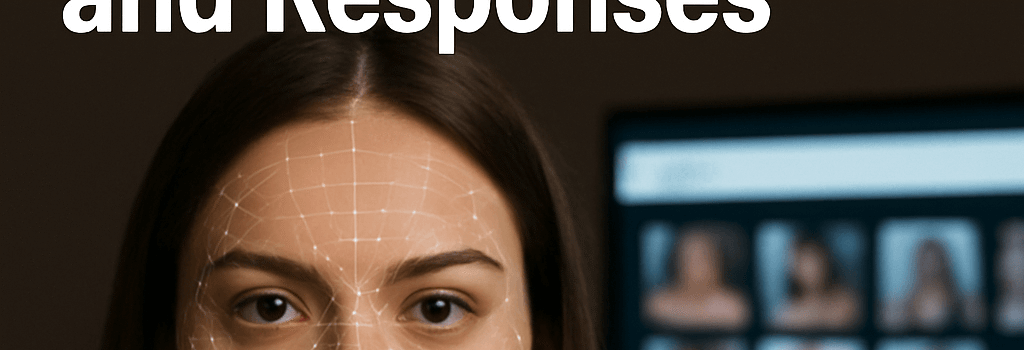Clothoff’s Global Deepfake Porn: Tech, Legal Issues, and Responses

Introduction
Clothoff, the notorious “nudify” app that transforms ordinary photographs into deepfake nude imagery, is accelerating its global expansion. Internal documents and whistleblower testimony obtained by investigative outlets reveal an aggressive marketing playbook, sophisticated AI pipelines, and legal obstacles that have failed to slow its growth. This in-depth analysis explores the technical underpinnings of Clothoff’s service, its business strategy, ongoing legal actions, and potential countermeasures.
Background and Whistleblower Revelations
Last August, San Francisco City Attorney David Chiu sued Clothoff alongside several rival services to force a shutdown of non-consensual pornographic AI tools. Instead of retreating, Clothoff’s operators quietly acquired at least 10 competitor platforms, servicing between hundreds of thousands to several million monthly views each.
“They’ve gone from an ‘exciting startup’ vibe to cynical, money-obsessed operators,” said a former employee with access to internal roadmaps.
Budget and Marketing Channels
- Annual budget: ~$3.5 million for model hosting, GPU clusters, and marketing.
- Primary ad channels: Telegram bots, X (formerly Twitter) channels, Reddit sex-related subreddits, and 4chan.
- Target demographics: Males aged 16–35 with interests spanning video games, memes, and extremist online communities.
Technical Architecture and Model Analysis
Clothoff’s core pipeline leverages state-of-the-art deep learning models. According to insiders, the service uses a custom diffusion model fine-tuned on tens of thousands of celebrity and user-submitted images. Key technical details include:
- Inference Stack: 8× NVIDIA A100 GPUs, 40 GB VRAM each, hosted on a cloud provider in Eastern Europe.
- Pre-processing: Face detection via a MTCNN or RetinaFace model, followed by alignment and masking using OpenCV.
- Generation: A two-stage Stable Diffusion pipeline—for initial nude synthesis and secondary refinement—reducing artifacts in complex poses.
- Age Detection: A lightweight convolutional neural network (CNN) classifier, reportedly achieving ~85% accuracy but prone to bypass via adversarial examples.
Cloud Infrastructure and Scalability
Sources indicate Clothoff deploys Kubernetes clusters for horizontal scaling. Each inference pod holds a quantized model (8-bit) to minimize GPU memory footprint. They orchestrate jobs via a Python/FastAPI microservice, backed by Redis queues for task scheduling and user tracking.
Global Marketing Strategy
Der Spiegel’s leaked documents outline Clothoff’s plan to target German, British, French, and Spanish markets by featuring “naked images of well-known influencers, singers, and actresses.” Ads use clickbait taglines like “You Choose Who You Want to Undress,” driving funnel traffic into Telegram communities and proprietary web frontends.
“Consent? We don’t care,” said one marketing slide. “Volume = Profit.”
Legal Battles and Ethical Concerns
Beyond Chiu’s lawsuit, a New Jersey high-schooler filed a complaint seeking $150,000 per image after a classmate used Clothoff to create nude deepfakes of her at age 14. Although the Take It Down Act has passed federally—empowering platforms to remove AI-generated non-consensual content—it’s likely to face First Amendment and censorship challenges.
Countermeasures and Detection Technologies
Experts recommend a multipronged approach:
- Digital Watermarking: Embedding invisible or robust watermarks at image capture to authenticate originals.
- Anti-Deepfake Forensics: Using frequency domain analysis and ensemble detectors (e.g., XceptionNet, Mesonet) to flag generated images.
- Policy Enforcement: Stricter ID verification on platforms, higher legal penalties for distributors of non-consensual deepfakes.
Expert Opinions
Dr. Lena Schwarz, AI ethics researcher at TU Berlin, notes: “The diffusion models used by Clothoff have become so accessible that the barrier to entry for harmful deepfakes is essentially zero.”
Alexei Petrov, cybersecurity analyst, adds: “Deploying inference at scale on 8-bit quantized GPUs shows they’re optimizing for volume over quality, trading off subtle artifacts.”
Future Outlook
Clothoff’s trajectory underscores the challenges regulators face in keeping pace with AI innovation. Unless cloud providers tighten compliance or GPU vendors introduce usage limits, non-consensual deepfake services will continue to proliferate.
Additional Analysis: Policy and Regulation
With the European Union’s AI Act coming into effect and California’s privacy laws tightening, service providers may soon be forced to implement stricter age verification and consent tracking. Still, enforcement remains an open question when operators reside in jurisdictions with lax oversight.
Additional Analysis: Societal Impact
Beyond celebrity victimization, the broader threat targets minors—impacting mental health, educational outcomes, and legal liability for schools. Awareness campaigns and digital literacy programs are critical to equip potential victims with the knowledge to seek help and preserve evidence.
Conclusion
Clothoff exemplifies the dark side of generative AI: low-cost, high-volume production of non-consensual content. Its technical sophistication, combined with aggressive marketing and legal opacity, makes it a formidable challenge. Only a coalition of policymakers, platforms, and technologists can mount an effective response to curb its spread.